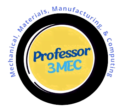Wind Energy is at the forefront of the energy transition in the United Kingdom, with the government and energy supermajors investing in its growth and expansion. However, to ensure that wind farms meet or surpass their expected lifespan and remain profitable, effective asset management is crucial. One of the major challenges facing the wind energy industry is blade defects, which can lead to costly failures.
To address this issue, researchers conducted a literature review on blade anatomy, failure modes, repair techniques, inspection, maintenance, quality assurance, applicable industry codes, and asset integrity management. A qualitative approach was used to gain an understanding of blade repair management by Wind Turbine Operators. A case study and interviews with these operators revealed a lack of standardization in blade repair management across different companies and even within the same company.
To address this lack of standardization, the researchers proposed a workflow for the management of blade repairs that includes integrity management of blades, adherence to a change management process, and post-execution validation. They also recommended a clear definition of temporary versus permanent repairs, supported by a proposed repair matrix, and an asset integrity management framework for wind energy companies to build their asset management strategies. They also suggested that DNVGL-ST-0376 Rotor Blades for Wind Turbines should include repair allowable limits that would guide operators on acceptance and rejection criteria for assessing defects identified in repairs. Finally, they identified the transferability of skills of composite repair technicians in the oil and gas industry as a potential solution for addressing the shortage of advanced blade repair technicians in the wind industry.
In summary, this study highlights the importance of effective asset management in the wind energy industry, and how understanding the causes and remedial actions of blade defects can help reduce costs during the operations and maintenance phase of a wind project. The proposed workflow and recommendations for standardization and asset integrity management can provide a foundation for wind energy companies to build their strategies and ensure the longevity and profitability of their wind farms.


